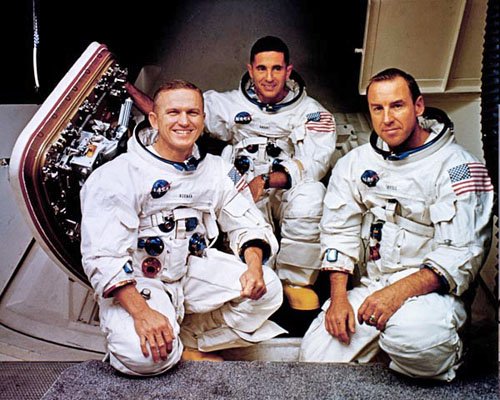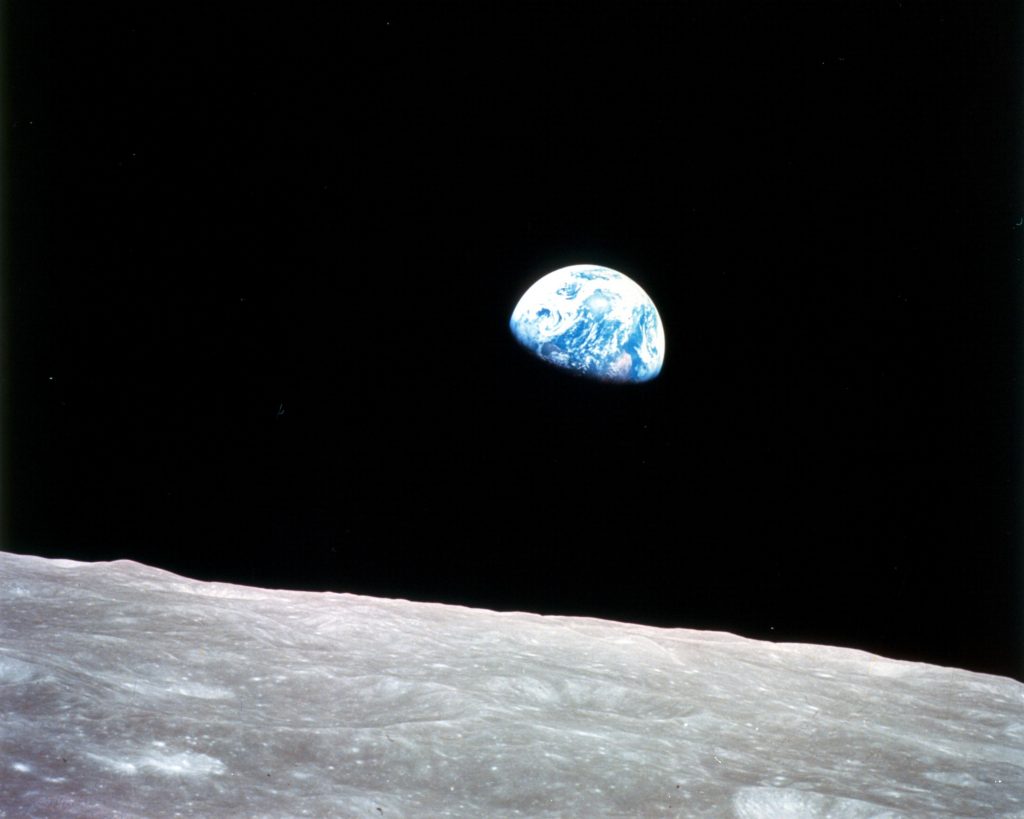20 July 2018
A Space and History Lesson on the 49th Anniversary of the Moon Landing
Posted by Dan Satterfield
It was 49 years ago today that Apollo 11 landed on the Moon, and while I remember it vividly, I often think about those who were born after that event. Can they truly imagine the wonder of it? If you’re under 50, you grew up in a world where people walking on the Moon was a part of our history and I know you appreciate the event, but likely not in the same way those of us experienced it do.
Perhaps, it’s just how I cannot appreciate how it must have felt to first hear a voice on a telephone wire or see a television picture. When we landed on the Moon that day, I was with my Great Grandmother who walked to Indian Territory (Now Oklahoma) behind a covered wagon. She clearly remembered reading about the Wright Brothers and their flying machine and of hearing a radio for the first time. I cannot fathom completely the awe of those events, just like a 21 year old today cannot fathom the awe of that hot Sunday afternoon of July 20,1969.
So many people in every science field were inspired by Apollo, and I’m one of them. I’ve been lucky enough to meet astronauts like the late John Young and I once met Jim Lovell, but I think perhaps the bravest crew of all has not gotten their due. Jim Lovell, Frank Borman, and Bill Anders on Apollo 8. The sheer audacity of the Moon landing overshadowed what they did.
Putting It In Perspective
Grab a basketball and a baseball, and put them 23 feet apart. You now have a rough scale model of the Earth/Moon system. Prior to Apollo 8, the farthest humans had travelled from our planet was about an inch above the basketball. Oh, and that inch was only briefly. Most of the time astronauts were less than a quarter of an inch above it!
Don’t just take my word here, go make that scale model, and measure the distance. This gives you a real idea of how brave the crew of Apollo 8 was. On all previous flights, if trouble developed the astronauts could be floating in the ocean in less than 90 minutes, but on Apollo 8 if something went wrong, they were days away. Jim Lovell himself would come to understand that in a deeply personal way in a short 18 months from December 1968.
Frank Borman’s wife Susan was no pushover. She hard pressed NASA management about the odds here husband would return, and she demanded the hard unvarnished truth. What were the odds her husband would return alive?
They told her it was probably 50%.
Apollo 8, with Borman, Lovell, and Anders were not going an inch, they were going 23 feet, and they would shoot just in front of the leading edge of the Moon as it orbited the Earth. To get the orbit they wanted, they needed to pass about 60 miles above the Moon as they passed around it. It’s like running in front of a car coming toward you but you have to just miss the getting hit by it. One mistake and there is a crash. A crash you do not survive.
As Apollo 8 swung around the backside and then they had to fire their engine for over four minutes to get into orbit. A few seconds too long and they’d crash. On our scale model, they had to pass a few millimeters above that baseball.
NASA’s young mission controllers had worked out their path. Isaac Newton was running the show. No need for relativity here, this was simple mechanics. Well, not that simple, it needed big computers and oh, did I mention no one had done it before with three lives in a tin can?
Those controllers monitored the slight change in the frequency of their radio communications caused by the Doppler effect and told the crew they were on track. Jim Lovell did star sightings, and used the onboard computer and came up with similar numbers. But, not exactly the same, and Commander Frank Borman knew that errors happened. Everyone in that capsule was a test pilot. They could all name friends who were now dead because errors happen when you push the envelope. They all knew that a minuscule error in track over such a huge distance could mean their instant death.
Borman kept checking on the track with Mission Control, and he had Lovell check it as well, but he was still not satisfied. He wanted more assurance, and the guidance geniuses in Houston came up with a way to give it to him. At least they gave him a way to have some peace of mind.
Everyone knew that the very instant that Apollo 8 disappeared behind the Moon, the tracking dish in Honeysuckle Creek, Australia would lose contact. Controllers did the calculations and told the crew, that if the track was right, their radio would go dead at precisely:
68 hours 58 minutes and 45 seconds on their mission timer.
They told Borman that if the radio went at exactly that second, they were spot on course.
As the moment approached, Borman watched that clock closely. In Houston, a nervous cap-com Jerry Carr started counting down the time to loss of signal.
Borman heard Carr tell him LOS in ten seconds and watched the seconds on the mission timer.
42,43,44, 45…
Just as the clock reached 68:58:45, the radio turned to loud static.
It was so precise that the crew joked that NASA had just shot off the signal! One of them jokes that Manned Space Flight Director Kris Kraft said “Turn it off at 45 seconds no matter what!”. They knew though that in reality, that it happened as the guidance geniuses had predicted. They were spot on course.
You’ve Never Heard This Before
There was a voice recorder on Apollo 8, and although Houston never heard them, you can hear the crews voice as they passed out of communication. In the recording linked below, you hear astronaut Jerry Carr in Mission Control tell the crew they have ten seconds to go before loss of signal. Turn up the volume and you can hear the static on the radio onboard Apollo 8. The crew then started their checklist for the lunar orbit burn coming in ten minutes.
LOS (as it sounded onboard) Apollo 8 is HERE.
That dude Isaac Newton rocks, and so did those guidance folks in Mission Control.
A short while later the crew would take the most famous photo ever made. It was taken out of contact with Earth but again the recorder captured the moment that the most famous photo in history was taken. You can see what it looked liked in this video from 5 years ago. This December, that image will be 50 years old.
Bill Ander’s photo did something incredible; It changed the way humans think about our planet. Before 1968, it was the effort to tame nature. Afterwards, it became a goal to preserve it. In two years the first Earth Day would be held, and the clean air/clean water act would be passed and signed by a Republican President.
We owe no respect to ideologues who do not appreciate the lessons learned in the horrible months that preceded the wonder and awe of Christmas 1968, and July 1969.




 Dan Satterfield has worked as an on air meteorologist for 32 years in Oklahoma, Florida and Alabama. Forecasting weather is Dan's job, but all of Earth Science is his passion. This journal is where Dan writes about things he has too little time for on air. Dan blogs about peer-reviewed Earth science for Junior High level audiences and up.
Dan Satterfield has worked as an on air meteorologist for 32 years in Oklahoma, Florida and Alabama. Forecasting weather is Dan's job, but all of Earth Science is his passion. This journal is where Dan writes about things he has too little time for on air. Dan blogs about peer-reviewed Earth science for Junior High level audiences and up.
Thank you Dan.